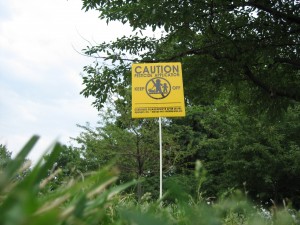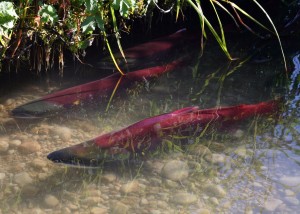15
Jun
USDA Agreement Bans Organic Certifier from Operating in China for One Year
(Beyond Pesticides, June 15, 2010) The U.S. Department of Agricultureâs (USDA) National Organic Program (NOP) announced on June 14, 2010 it has reached a settlement agreement with the organic certifying agent Organic Crop Improvement Agency (OCIA), ceasing its operations in China because of inadequate oversight. An August 2007 audit by the NOP revealed that OCIA used inspectors on state-run farms who were employed by the Chinese government and therefore had a conflict of interest. In July 2008, NOP proposed revocation of OCIAâs accreditation in China, but OCIA appealed. The settlement agreement with OCIA, once a lead certifier of Chinese organic goods, prohibits it from operating in China. OCIA retains its accreditation for its certification activities in other countries, including the U.S., Canada and Mexico.
âIt is critical that we maintain the integrity of organic products for consumers,â said Rayne Pegg, Administration of USDAâs Agricultural Marketing Service (AMS), which administers the NOP. âAll certifiers and operations, domestic or foreign, must be held to the same standards. We will remain vigilant to make sure that products labeled as organic meet the standards prescribed by law.â Environmentalists are pleased that USDA has taken action against OCIA, but are concerned that the process did not allow for public disclosure during the three year process to reach the current settlement.
Ensuring that the organically labeled food we buy is truly organic has rested on the shoulders of private accredited certification organizations (certifying agents), state agencies, and the U.S. Department of Agriculture (USDA) since the 2002 establishment of its National Organic Program (NOP) under of the Organic Foods Production Act (OFPA). All organic products are required to originate from farms or processors certified by NOP-accredited certifying agents, which may be state-run or private. NOP relies on these agents to ensure that certified organic operations continue to comply with federal organic regulations. Organic operations must maintain an approved farm plan of how it will meet NOP regulations and undergo a successful inspection by the certifier to label its products organic.
In the case of OCIAâs operation in China, it was contracting employees of a Chinese government agency to inspect state-controlled farms and food processing facilities. Miles McEvoy, Deputy Administrator of the NOP, told The New York Times that department investigators found at least 10 state-managed farms or factories that posed a potential conflict of interest. âWeâre serious about enforcing the organic standards across the board, and weâll be doing more work in China and other countries to assure the integrity of organic products,â Mr. McEvoy said.
As part of the settlement, OCIA would be able to apply for re-accreditation as a certifying agent in China after one year. In order for OCIA to be approved to start certifying organic operations in China, OCIA would have to hire inspectors who have no connection to any governmental or quasi-governmental Chinese entity to inspect OCIA certified operations in China. OCIA has agreed to increased NOP oversight and inspection of the company and its operations if the company is accredited to certify operations in China again.
While there is no evidence that the OCIA-certified agricultural products were not in compliance with USDA organic standards, the action against the certifier may continue to shake consumer confidence in Chinese imports, especially organic food. According to The New York Times, Whole Foods Market, the nationâs leading organic retailer, has used Chinese organics, including those from OCIA-inspected producers, in many of its store brand products, but cut the number of Chinese organic products, in part because of consumer worries about their credentials, from 30 to only two, shelled and unshelled frozen edamame soybeans. The company says it conducts independent tests and is confident that the edamame is pesticide-free.
Although the rigorous standards and certification procedures of the NOP are unparalleled in chemical-intensive agriculture, the program has been criticized for straying from its legal requirements during the Bush Administration. Organic advocates criticized USDAâs implementation of the federal organic law during this period which led to two USDA Inspector General (IG) investigations. While most organic labeled produce and processed agricultural products on store shelves probably complied with federal law during this period, the IG found several serious problems with the implementation of the program between October 2003 and July 2009. Ms. Pegg, appointed by the Obama Administration in 2009, said USDA agrees in principle with the findings and recommendations of the audit. Citing recent budget increases, which nearly double the NOP staff size from 16 to 31, Ms. Pegg said, âNOP anticipates addressing all of the recommendations made by the Inspector General in FY 2010.â These include improvements to the process for certifying imported agricultural products.
For more information on the changes at the NOP following the IG audit, read the IG report, Oversight of the National Organic Program (01601-03-Hy) and Beyond Pesticidesâ analysis. More information on the regulation of organic agriculture is available on Beyond Pesticides organic food program page.













